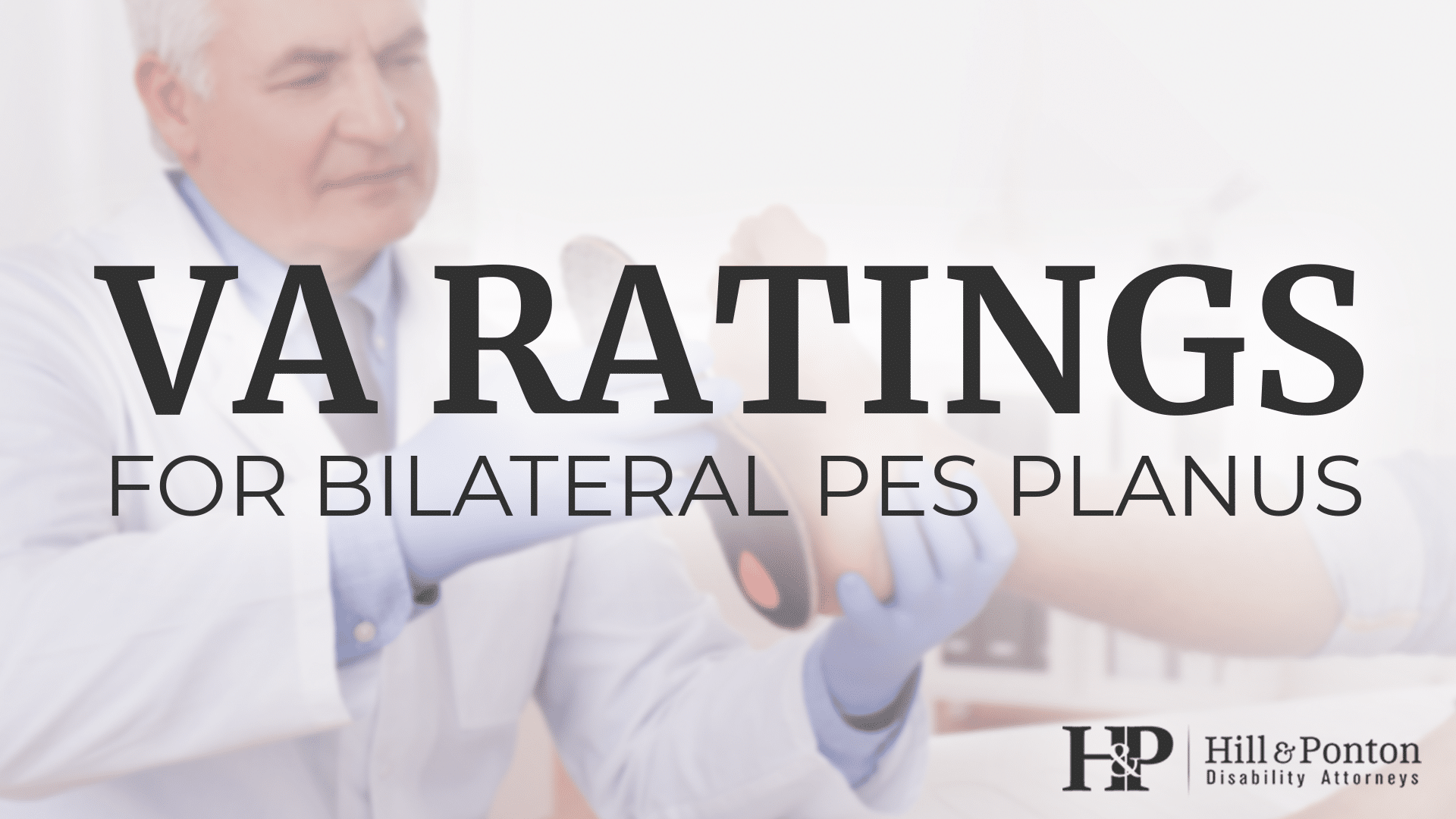Pes Planus is a condition of the foot in which the arches on the inside of your foot are flattened, allowing the entire sole of your foot to touch the ground when you stand up. Pes Planus, Aka flatfoot or flat feet is common among army veterans, air force service members, marines, and navy vets. In fact, millions of veterans have been diagnosed with flat feet and there is no doubt that millions more will as well in the future.
You may have heard of flatfoot or Pes Planus before. In fact, the condition of the foot can actually disqualify soldiers from service before they are even able to successfully enlist. During the original physical that is performed when someone joins the US Army or other branch of the military, flat feet are one of the main conditions doctors are looking for.
Can You Get VA Disability for Flat Feet?
If you are a veteran with flatfoot, fallen arches, or flat feet, you may be wondering if it’s possible to obtain VA disability compensation for your flat feet. The answer is yes, especially if you can connect your medical condition to service or even basic training. Today we will discuss what flat feet is and how the VA rates flat feet.
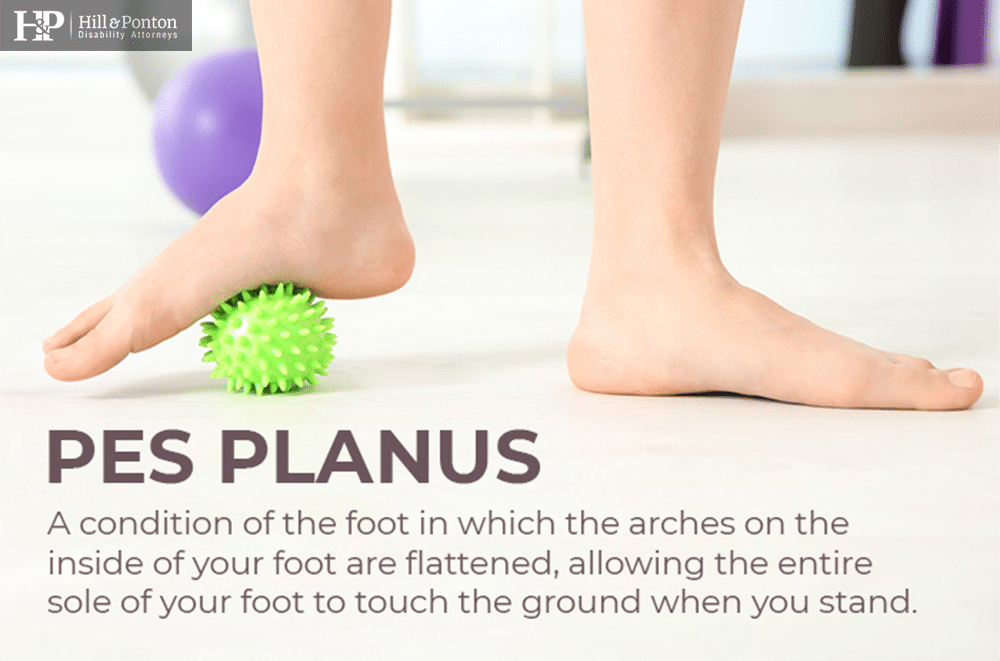
What is Flatfoot (Pes Planus)?
Otherwise, known as flat feet, Pes Planus is a foot deformity in which the arch of the foot on the inside is flattened, allowing the entire sole of your foot to touch the ground when you stand up whereas a normal arch would not do so. Essentially, this is a very common condition among most veterans looking to claim VA disability benefits.
This condition can develop later on in life and risk factors can include rigorous and repeated physical activity from military service or aggravation by military service. Acquired flatfoot can happen bilaterally, meaning in both feet. It can occur due to posterior tibial tendon dysfunction though this is not the only cause. Most veterans do not show any signs or symptoms that are associated with flat feet. Some veterans can experience foot pain and swelling. Sometimes the pain worsens with activity. Some of the more severe symptoms can lead to other issues such as lower leg and back pain or difficulty in performing certain foot movements and foot problems.
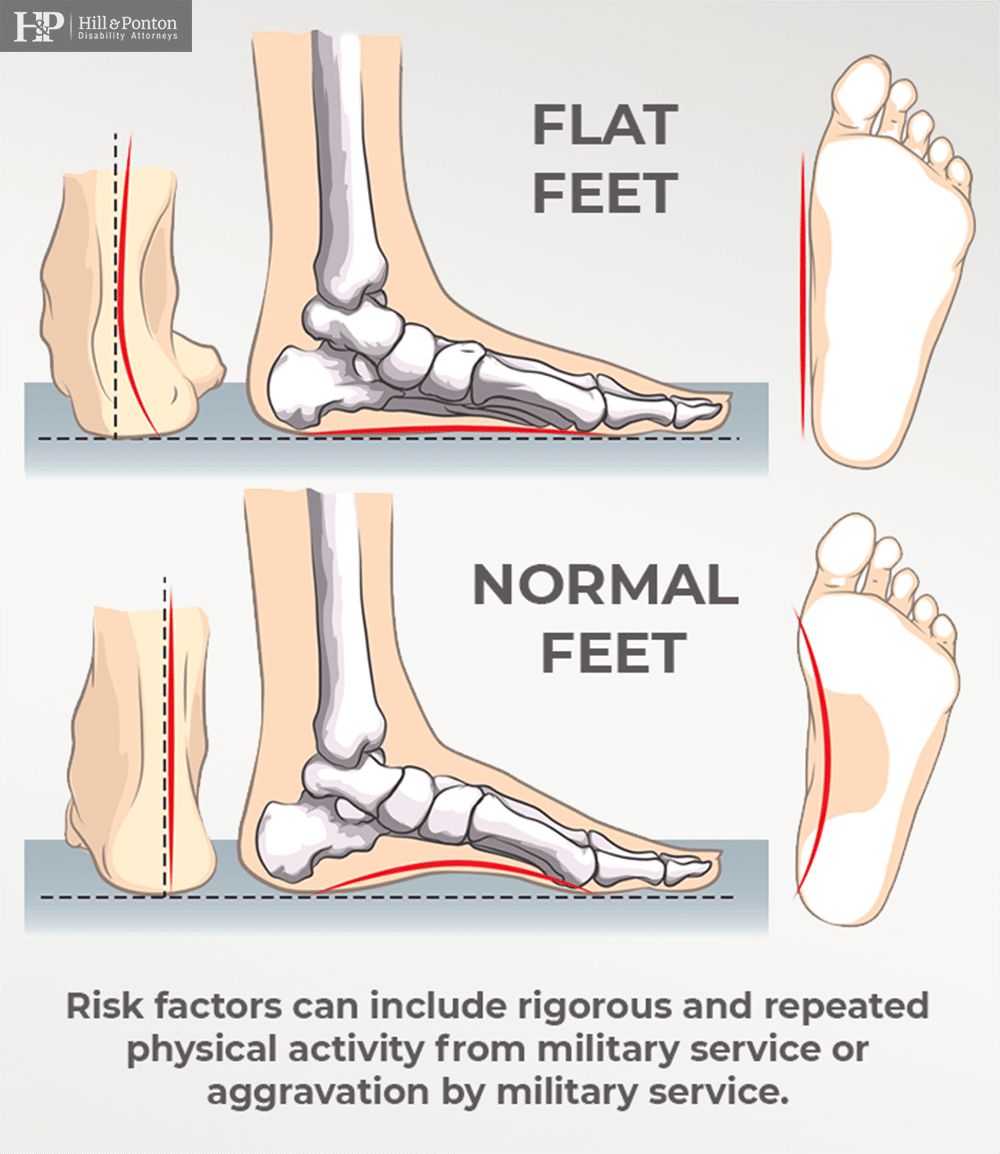
Flat feet, the opposite of high arches, can affect the alignment and biomechanics of the body when a person is standing, walking, or running which can increase the likelihood of pain developing in the hips, knees, and ankles.
Can you join the Army or Military with Flat feet?
Asymptomatic flat feet, that is, flat feet that do not impede physical activities or have negligible symptoms could be allowed in for military enlistment. However, if your flat feet are showing harmful or painful symptoms then you may be disqualified from joining the military.
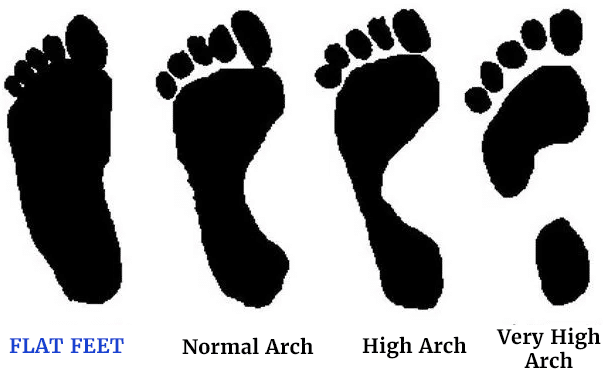
Symptoms and Side Effects of Flat Feet (Pes Planus)
The severity of flat feet can vary from case to case and can also contribute to other conditions including but not limited to:
- Hammertoes
- Bunions
- Hallux Valgus
- Arthritis in the ankle(s)
- Plantar fasciitis
- Lower back pain
- Damage to ligaments
- Leg pain
- & More
The above-listed conditions can often lead to the necessary use of inserts, insoles, or in severe cases, surgery. Contacting a knowledgeable medical professional and then working with an experienced law firm before your conditions become too severe can save veterans a lot of pain and discomfort.
How Does the VA Rate Flat Feet (Pes Planus)?
The VA uses the rating schedule under the musculoskeletal system under 38 C.F.R. § 4.71a, under the diagnostic code 5276. You can be rated between a 0 percent rating and for more severe cases, a 50 percent rating. The ratings are based on the severity of your symptoms from mild to pronounced flat feet. The rating schedule looks like the following:
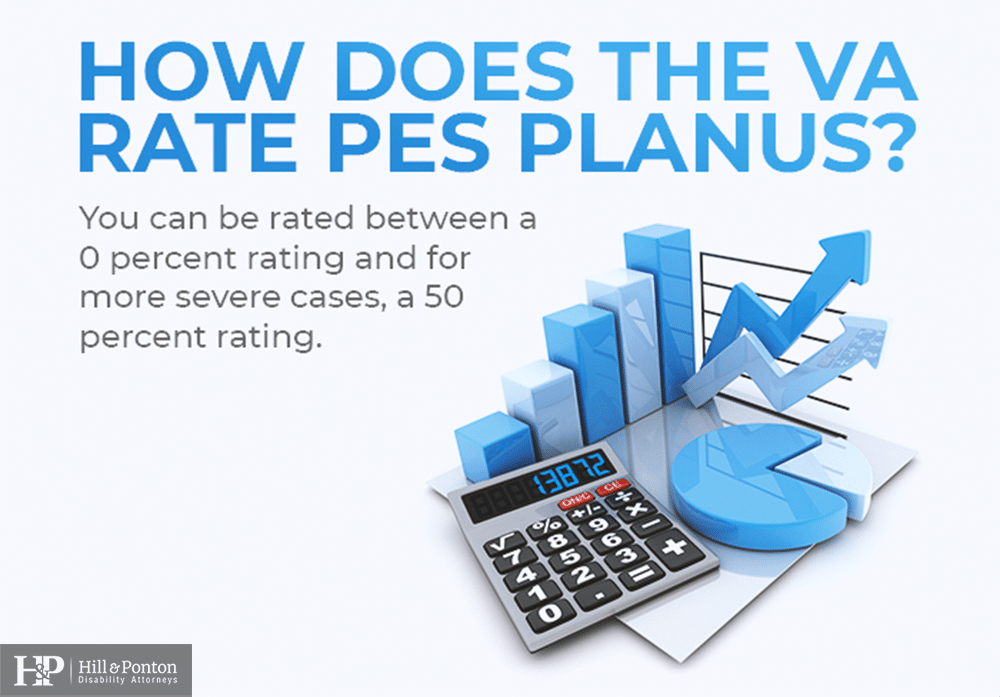
50% Flat Feet Rating
Pronounced flat feet is a medical condition that can be defined when a veteran experiences marked pronation (walking on the inside of the foot), extreme tenderness of the plantar surfaces of the feet, marked inward displacement, and severe spasm of the Achilles tendon on manipulation, and not improved by orthopedic shoes or appliances. Veterans who have pronounced bilateral flat feet are rated at 50 percent. Veterans with pronounced unilateral (only one foot), are rated at 30 percent.
30% Flat Feet Rating
Severe flat feet is when the evidence shows objective marked flatfoot deformities such as pronation or abduction (when the foot cannot point straight forward from the body), pain on manipulation, and use accentuated, an indication of swelling on use, characteristic callosities. Veterans with severe bilateral flat feet can be rated at 30 percent .
20% Flat Feet Rating
Veterans with severe unilateral flat feet can be rated at 20 percent.
10% Flat Feet Rating
Moderate flat feet is when a veteran’s weight-bearing line is over the medial great toe, there is inward bowing of the Achilles tendon, and pain on manipulation and use of the feet. Veterans with moderate bilateral and unilateral flat feet are rated at 10 percent.
0% Flat Feet Rating
Mild flat feet, or flexible flatfoot are used to diagnose US military veterans whose symptoms are relieved by using arch support, insoles, or a built-up shoe is rated at 0 percent, which is a non-compensable rating. Keep in mind that flat feet can be a medical issue that worsens over time and may need to be re-evaluated further down the line.
Secondary Conditions Linked to Flat Feet
If left unchecked, flat feet could lead to additional orthopedic issues which could then be claimed as secondary conditions if your flat feet are awarded service connection. This is because flat feet can make walking such an uncomfortable and painful experience, it typically leads to an abnormal or nontypical gait which can lead to undue stress and strain on the rest of your body. Common conditions related to flat feet include:
- Plantar fasciitis
- Arthritis
- Knee pain
- Hip pain
- Lower Back pain
- Degenerative Disc Disease
- “Hammertoes”
- and much, much more
What Do I Do if VA Denies My Flat Feet Claim?
If you have been diagnosed with flat feet by an orthotics expert, podiatrist, or medical professional and are experiencing symptoms of flat feet, it may be beneficial to apply for VA disability compensation. There are a lot of veterans who have encountered a single disqualifier that has completely stopped their progress. If you have been denied or received an unfavorable decision, please contact our office to see how we can assist you with an appeal.
